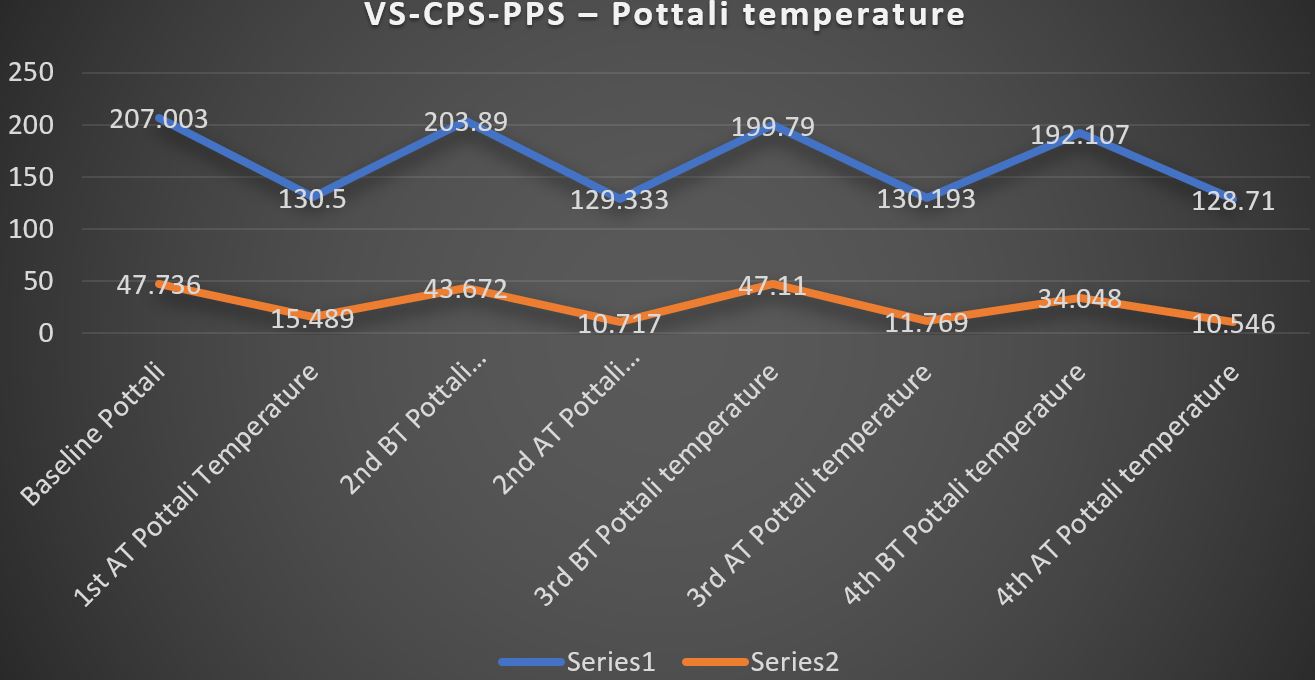Pilot Study on Temperature Dynamics of Pinda Sweda: A Step Toward Developing a Temperature Regulating Instrument
DOI:
https://doi.org/10.21760/jaims.10.5.6Keywords:
Swedana, Sankara Sweda, Pottali, Upanaha Swedana, Ayurveda, FomentationAbstract
Swedana, a key treatment for musculoskeletal disorders caused by Vata and Kapha, includes Sankara Sweda. Sankara Sweda is the first and foremost Sweda type of Sagni Sweda by Acharya Charaka. So, it must have special importance in the management of various diseases. Sankara Sweda again is of many types. Based on its properties generally, it can be further broadly classified into Snigdha Sankara Sweda and Ruksha Sankara Sweda. In practice, the Sankara Sweda procedure struggles to maintain a consistent temperature throughout treatment. To address this, two Pottalis and two therapists are required, making the process time-consuming. Our Pilot study revealed an average body temperature drop of 4°F and a Pottali temperature drop of 69°F within a 2-minute inter-Pottali change period, with each Pottali applied for 2 minutes. A study on Upanaha Swedana demonstrated that maintaining a constant temperature yielded statistically significant results, outperforming the conventional method while reducing treatment time to 30 minutes. Therefore, this pilot study aims to modify Sankara Sweda Pottali for consistent temperature, enhancing its efficacy in managing musculoskeletal and other diseases.
Downloads
References
Agnivesha. Charaka Samhita with Ayurveda Dipika commentary of Chakrapani Datta. Edited by Trikamji VJ. New Delhi: Chaukamba Publications; 2020. Sutra Sthana, Ch. 22, Ver. 11. p. 120.
Agnivesha. Charaka Samhita with Ayurveda Dipika commentary of Chakrapani Datta. Edited by Trikamji VJ. New Delhi: Chaukamba Publications; 2020. Sutra Sthana, Ch. 22, Ver. 9-11. p. 120.
Agnivesha. Charaka Samhita with Ayurveda Dipika commentary of Chakrapani Datta. Edited by Trikamji VJ. New Delhi: Chaukamba Publications; 2020. Sutra Sthana, Ch. 14, Ver. 41. p. 90.
Agnivesha. Charaka Samhita with Ayurveda Dipika commentary of Chakrapani Datta. Edited by Trikamji VJ. New Delhi: Chaukamba Publications; 2020. Sutra Sthana, Ch. 14, Ver. 41. p. 90.
Moosad VP. Sukhasadhakam. Kochi: Sradha Books; 2000. p. 173.
Sastri R, editor. Govindadas. Bhaishajya Ratnavali. Ambikadatta Sastri commentary (Hindi). Ed rpt. Varanasi: Chaukhamba Prakashan; 2015. p. 794.
Tikale S, Umate K, Tiwari M, Dhande N. An Ayurvedic approach of Pinda Sweda and its different modalities. Int J Curr Res Rev. 2021;13:26-9. doi:10.31782/IJCRR.2021.13816.















